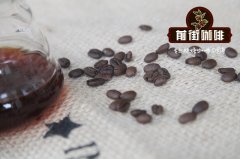What effect does different packaging have on raw beans?
Professional coffee knowledge exchange more coffee bean information please follow the coffee workshop (Wechat official account cafe_style)

There is a lot of information on the label of raw coffee beans.
In addition to clear information at a glance, such as altitude and how to handle it, there are also some common English abbreviations that sometimes take a little thought.
GP, refers to a way of packaging raw beans, GrainPro, special packaging for grains.
When raw coffee beans are exported from the place of production, they are packed in gunny bags, which is already familiar to most coffee lovers.
However, with the trend of boutique coffee, some changes have taken place in the way of packaging.
As we all know, the world's coffee production is mainly distributed in the so-called "coffee belt" coffee zone or coffee belt, that is, between 20 or 25 degrees north and south latitudes, mainly concentrated in Africa and Central and South America.
Raw coffee beans take a long journey from the place of production to the place of consumption, usually by sea considering the cost of transportation.
During intercontinental transportation, it may take more than a month for raw beans to be transported.
The main defects in sack packaging are well known and may taint raw beans with the smell of sacks. In addition, gunny bags can not be waterproof, in the long process of shipping, there will inevitably be omissions. Boutique coffee users may find that the original cup tested raw beans, after transportation, finally arrived, the effect of the second cup test is not satisfactory. The main reason is that the packaging of gunny bags is difficult to meet the sensitivity requirements of high-quality raw beans.
The higher the quality of raw beans, the harsher the storage conditions.
What is talked about is the humidity and temperature in the storage environment.
GrainPro packing, specially used for transporting or keeping dried grains. For raw coffee beans, the appearance shows that the raw beans are first packed in a multi-layer plastic bag and then, in the traditional way, into a gunny bag.
GrainPro bags can ensure the water content of raw beans, waterproof, anti-UV, can inhibit the growth of fungi or insects, compared with the traditional packaging, can better ensure the quality of raw beans during storage.
Important Notice :
前街咖啡 FrontStreet Coffee has moved to new addredd:
FrontStreet Coffee Address: 315,Donghua East Road,GuangZhou
Tel:020 38364473
- Prev

Marago Rippi Coffee, which is 3 times larger than ordinary coffee beans. Introduction to Marrago Rippi Pigs
Professional coffee knowledge exchange more coffee bean information Please pay attention to the coffee workshop (Wechat official account cafe_style) sometimes see coffee beans are very big, is this a mutation? No ~ there are three kinds of elephant beans in coffee beans, and Marragozipi is one of them! The size of the coffee beans in Marrago Rippi is three times the size of ordinary coffee beans. Good or very good in Central America
- Next

What is the effect of adjusting grinding on the flavor of coffee?
Professional coffee knowledge exchange more coffee bean information Please pay attention to the coffee workshop (Wechat official account cafe_style) many baristas spend a lot of time every morning adjusting the bean grinder, every day after making coffee will carefully remove the residue in the coffee handle, clean up the powder in the channel of the grinder, so that every step of the production is accurate. At this time, baristas usually also
Related
- Beginners will see the "Coffee pull flower" guide!
- What is the difference between ice blog purified milk and ordinary milk coffee?
- Why is the Philippines the largest producer of crops in Liberia?
- For coffee extraction, should the fine powder be retained?
- How does extracted espresso fill pressed powder? How much strength does it take to press the powder?
- How to make jasmine cold extract coffee? Is the jasmine + latte good?
- Will this little toy really make the coffee taste better? How does Lily Drip affect coffee extraction?
- Will the action of slapping the filter cup also affect coffee extraction?
- What's the difference between powder-to-water ratio and powder-to-liquid ratio?
- What is the Ethiopian local species? What does it have to do with Heirloom native species?

